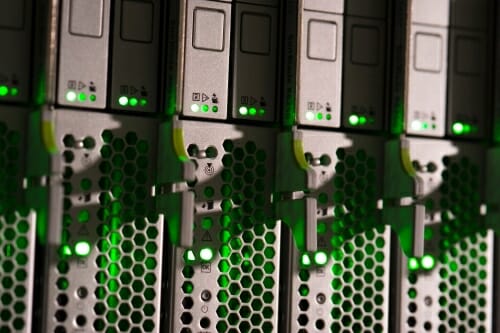Air Force-backed center to make machine learning more independent, predictable, secure
Artificial intelligence has become so smart and commonplace that most people accept computer-generated restaurant recommendations or movie suggestions without blinking an eye. Underneath the virtual surface, however, much remains mysterious in the realm of machine learning, where systems attempt to mimic the remarkable way humans learn.
Machine learning capabilities aren’t yet up to the task of handling highly complex, rapidly changing or uncertain environments, and artificial intelligence can easily be tricked by false information from a clever adversary — critical situations for national defense.
In an effort to build the next generation of machine-learning methods to support its needs, the Air Force Office of Scientific Research and the Air Force Research Laboratory have awarded $5 million to establish a university center of excellence devoted to efficient and robust machine learning at the University of Wisconsin–Madison. The center also includes researchers from the Toyota Technological Institute at Chicago (TTIC).
Called the Machines, Algorithms and Data Lab (MADLab), the center is led by Robert Nowak, McFarland-Bascom Professor in electrical and computer engineering at UW–Madison and an adjoint professor at TTIC.
Central to the new center’s mission is finding a deeper understanding of fundamental concepts in machine learning and then leveraging that insight to build data-efficient, operationally robust computer programs for national defense needs. However, innovations emerging from the center could benefit the lives of people worldwide, and Nowak believes the next generation of machine learning algorithms will not only bolster national defense capabilities, but also benefit civilians.
“Our aim is to make machine learning more effective and broadly applicable,” he says.

Today’s machine learning techniques use massive amounts of data that humans have analyzed and labeled, preparing systems to operate in well-understood and well-defined environments. Photo: Jeff Miller
Today’s machine learning techniques use massive amounts of data that humans have analyzed and labeled, preparing systems to operate in well-understood and well-defined environments. Essentially, with data and algorithms, machines are programmed to teach themselves.
However, some of the most sensitive types of information, like covert intelligence, often consist of poorly labeled or incomplete data sets which can confound machine learning algorithms. Additionally, analyzing the types of data — like electromagnetic signals or hyperspectral imagery — that arise in tactical environments can be more complicated than parsing patterns from more common information sources such as photographs, sounds or texts.
“Modern machine learning methods can be unexpectedly fragile, which is particularly sobering when they are used in medicine, defense or autonomous vehicles,” says center collaborator Rebecca Willett, a professor of electrical and computer engineering at UW–Madison and, like Nowak, a fellow of the UW’s Wisconsin Institute for Discovery. “By understanding fundamental aspects of how and why different approaches work, we can better prevent failures.”
Future artificial intelligence methods will be required to help systems learn and make decisions without large amounts of human-labeled data. They also must perform in degraded or changing environments, and even determine how and when to ignore manipulated data.
“Machine learning has advanced considerably in recent years, but current systems require huge amounts of training data,” Nowak says. “Machines learn, but not as efficiently as people.”
Not yet.
MADLab researchers will pursue four main avenues to make machine learning more efficient and robust.
Nowak believes the next generation of machine learning algorithms will not only bolster national defense capabilities, but also benefit civilians.
The scientists will work to teach computers to automatically select the most informative data for training, so that humans waste less time labeling unimportant information. They will attempt to boost efficiency by making the coding that powers machine learning more similar to human brain patterns. Another goal is to ensure that machine learning algorithms perform predictably, even when faced with corrupt or incomplete data. And finally, the researchers will develop strategies to protect machine learning systems from attacks.
Because of its breadth of expertise, UW–Madison is an ideal location for MADLab. The new center will be an important addition to an already thriving community of data science, machine learning and artificial intelligence research on the campus.
“MADLab harnesses the collective talent of world-renowned researchers who already have made significant contributions to machine learning,” says Nowak, who also leads the machines, algorithms and data research effort in UW–Madison’s Grainger Institute for Engineering. “Data science and machine learning research is thriving at UW–Madison. MADLab and the National Science Foundation-funded Institute for Foundations of Data Science in the Wisconsin Institute for Discovery are working together to develop the science and technology of tomorrow.”
Center collaborators include UW–Madison electrical and computer engineers Mikko Lipasti and Dimitris Papailiopoulos and computer scientists Jerry Zhu and Yingyu Liang, and Greg Shakhnarovich and Karen Livescu from TTIC.



